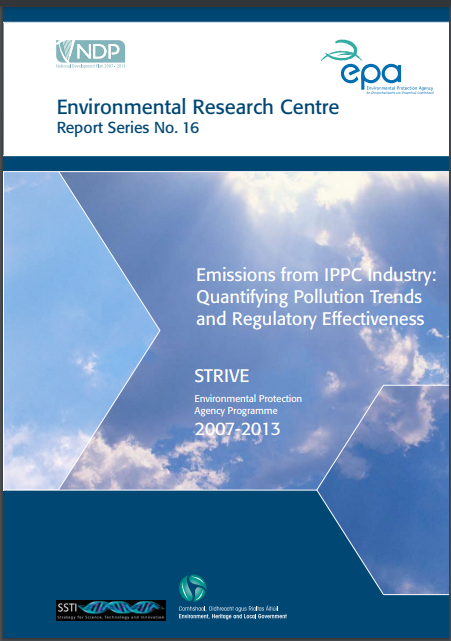Emissions form IPPC Industry: Quantifying Pollution Trends & Regulatory Effectiveness
Final Report for the ERTDI-funded project: 2006-FS-NE-38-M4
Summary: ERC Report 16 - David Styles and Michael B. Jones

The 1996 EC Directive on Integrated Pollution Prevention and Control (IPPC) licensing (96/61/EC) integrated the regulation of emissions to air, water and land, and the management of wastes and noise, into single licences. Integration of impacts across different media and harmonisation across Member States were intended to ensure high environmental standards throughout the EU and avoid the shifting of environmental pressures to less-regulated media or countries. Although the IPPC Directive was only formally transposed into Irish law through the Protection of the Environment Act in 2003, a similar form of integrated licensing (Integrated Pollution Control, IPC) had been enforced since 1994 by Ireland’s Environmental Protection Agency (EPA). Essentially, IPPC licence conditions specify minimum environmental performance standards, including emission limit values (ELVs) associated with application of best available techniques (BAT). Monitoring and reporting of emissions, waste export, resource consumption and local impacts are also required. This report presents the results of a 3-year research fellowship in which air and water emissions data reported by IPPC installations were collated and interpreted in terms of environmental performance, and used to infer the effectiveness of IPPC regulation.
A major output from this study is the novel Environmental Emissions Index (EEI) model, devised to interpret the 20 major air and water emission parameters routinely reported in Annual Environmental Report (AER) summaries submitted by IPPC licensees. Life-cycle impact assessment (LCIA) characterisation, normalisation and weighting methodologies are used to aggregate reported emissions according to their contribution towards total pollution, in the context of six major environmental impact categories:
- Acidification potential;
- Aquatic toxicity potential;
- Eutrophication potential;
- Global warming potential;
- Human toxicity potential; and
- Tropospheric ozone formation potential.
Also Available for Download:
To order a copy of this report:
Please contact the EPA Publications Office:
Telephone: 053-9160600E-mail: publications@epa.ie https://www.epa.ie/media/archive/research/research-thumbnails/erc-16.png